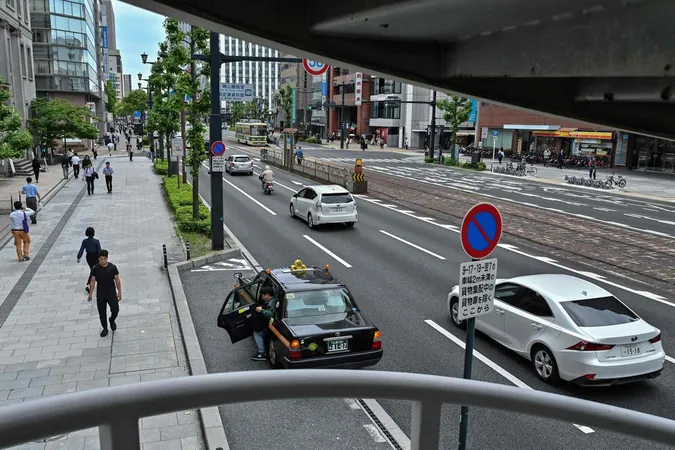
Japan Cracks Down on Foreign Driver's License Conversions: What You Need to Know!
2025-07-10
Author: Wei
New Rules Set to Challenge Foreign Drivers in Japan
Japan is tightening the reins on foreign driver's license conversions, aiming to elevate road safety standards amidst rising accident statistics involving foreign nationals. Starting October 1, the government plans to overhaul the conversion test—introducing a significantly more challenging written exam featuring 50 questions, up from the current 10.
In a bid to enhance road safety, candidates must now score a daunting 90% to pass, compared to the previous 70% requirement. This initiative responds to a notable increase in foreign drivers on Japanese roads, as the numbers more than doubled in recent years with 68,623 individuals converting their licenses in 2024 alone.
What’s Changing in the Test?
The revamped test will now include crucial topics such as driving under the influence of alcohol and proper accident response. Additionally, practical assessments will focus on navigating pedestrian and railroad crossings, which play a critical role in urban driving.
Say Goodbye to Easy Conversions!
As Japan’s National Police Agency highlights, tourists and short-term visitors will no longer enjoy the privilege of converting their foreign licenses. This decision comes as lawmakers criticize the existing system for being 'too easy,' with a staggering 90% pass rate in the written component and only a 30% pass rate for the practical driving test.
Who Will Be Affected?
To qualify for license conversion under the new rules, all applicants must present a copy of their certificate of residence in Japan, regardless of nationality. Meanwhile, Japanese citizens looking to convert licenses from abroad can use their family register certificates instead.
Increasing Foreign Participation on Japanese Roads
The push to reshape the conversion system aligns with Japan’s broader strategy to attract foreign talent and tourism. Among the new certificate holders, Vietnamese drivers made up the largest segment, with 16,681 conversions, followed closely by Chinese and South Korean nationals.
These changes mark a pivotal move towards ensuring that all drivers in Japan—irrespective of where they hail from—are equipped with the necessary knowledge and skills to navigate its roads safely.

 Brasil (PT)
Brasil (PT)
 Canada (EN)
Canada (EN)
 Chile (ES)
Chile (ES)
 Česko (CS)
Česko (CS)
 대한민국 (KO)
대한민국 (KO)
 España (ES)
España (ES)
 France (FR)
France (FR)
 Hong Kong (EN)
Hong Kong (EN)
 Italia (IT)
Italia (IT)
 日本 (JA)
日本 (JA)
 Magyarország (HU)
Magyarország (HU)
 Norge (NO)
Norge (NO)
 Polska (PL)
Polska (PL)
 Schweiz (DE)
Schweiz (DE)
 Singapore (EN)
Singapore (EN)
 Sverige (SV)
Sverige (SV)
 Suomi (FI)
Suomi (FI)
 Türkiye (TR)
Türkiye (TR)
 الإمارات العربية المتحدة (AR)
الإمارات العربية المتحدة (AR)